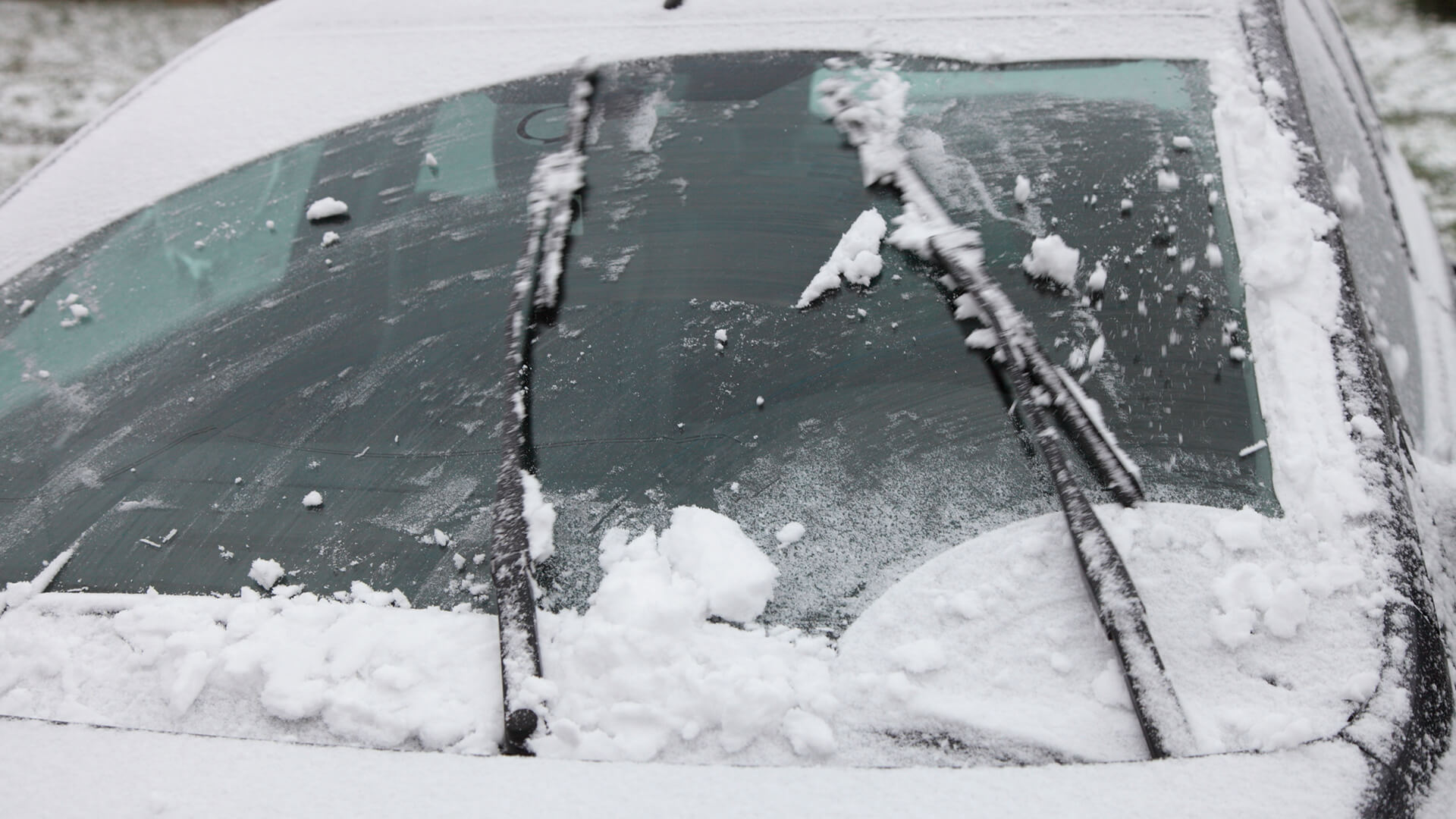Frozen wipers: What can you do?
Effectively prevent frost on wipers
Frozen windscreens are often a source of frustration for drivers, because in the morning before work or on the way to nursery or school, there’s usually not a lot of time for getting rid of frost on the windscreens and wiper blades. De-icer spray is usually the remedy of choice in this scenario. However, if you forget to the wipers and then switch on the wiper system, there’s a risk that the sensitive rubber of the wiper blades will become damaged. To make sure that this doesn't happen to you, we’ll give you a few helpful tips on ways to prevent frozen wipers and how to de-ice them quickly and safely if the worst comes to the worst.
Folding up wipers in winter
The simplest trick that can prevent wipers from freezing to the windscreen is to pull back the wipers into the service position and fold them up. This eliminates the risk of your wipers freezing to the glass. However, if you fold up your wipers in frosty conditions, make sure that you cover your windscreen well, as the wiper arms could snap back and damage the windscreen. Furthermore, folding them up doesn’t save you from having to scrape the windscreen clear.
Covering windscreens: the professional solution
The easiest and most effective way is to protect your windscreen with a cover in winter and on especially frosty nights. You can prevent the windscreen from freezing with an appropriate windscreen cover made of aluminium foil, also called ice protection foil. You also prevent possible damage to the wiper rubber and benefit from saving the time you would have spent scraping the windscreen clear. Another advantage is that, in summer, the cover reliably protects the interior of your vehicle from heat.
Household products that protect wipers from frost
An inexpensive way to protect wipers from freezing is to use clear plastic sleeves. Place them around the wiper arms until they form a kind of tube around the rubber of the wiper and fix the foils with an adhesive strip. Don't wrap too tightly so that you can easily pull off the protective cover later.
What you should avoid when de-icing windshield wipers
Some tricks are persistently used even though they could harm rather than help the windscreen and wiper blades. We’ve compiled a list of taboos that aren’t suitable for de-icing windshield wipers:
- Forcibly loosening the wipers risks damaging the rubber. It’s better to use de-icer spray before removing the wipers from the windscreen.
- Don’t pour hot or warm water over the windscreen and iced-up wipers. In the worst case scenario, the windscreen can crack.
- Don’t use cardboard or paper to protect the windscreen and wipers from freezing in the winter. These materials can quickly freeze themselves because they absorb moisture well.
- Don’t switch on the windscreen wiper system when the wipers are still frozen , as this can also cause damage to the wiper rubber. Switching on the heating before driving off can help here and slowly de-ice the windshield wipers.
De-icing frozen wiper nozzles
If the nozzles on the windscreen wiper system are frozen and water is no longer coming out of the system, it can help to bring the car to operating temperature. In most cases, the wiper arms can be used again after a short period of driving, but only until the next time the engine is switched off. The only remedy now is a trip to the petrol station or a car accessory shop, because you should replace the windscreen washer fluid immediately to have an ice-free wiper nozzle.
Think about frost protection in the autumn months

To prevent frozen nozzles, fill the windscreen washer fluid reservoir directly with antifreeze. Depending on the supplier and product, there are ready-mixed liquids as well as concentrate, which should be diluted with water. It’s advisable to have a little antifreeze in the windscreen washer fluid all year round to get ahead of the first frost.

